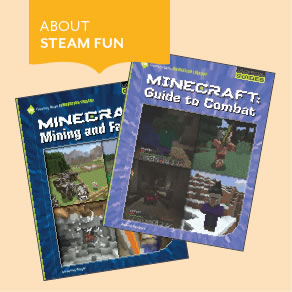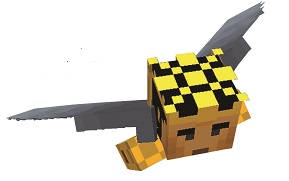Make Way for Minecraft!
If your experience with Minecraft has been trying to reduce the time your students or children play it, you’ll likely be surprised to learn who is behind a book series that features the perennially popular game.

Using the Game to Support STEAM Concepts
 Educators Use Game to Support STEAM Concepts
Educators Use Game to Support STEAM Concepts
If your experience with Minecraft has been trying to reduce the time your students or children play it, you’ll likely be surprised to learn who is behind a book series that features the perennially popular game. Two educators at University Liggett School in Grosse Pointe Woods, Michigan, Adam Hellebuyck and Michael Medvinsky, developed the Minecraft and STEAM series to be used in and out of the classroom. They found the fun and interactive world of Minecraft is much more than a game – it’s a great environment to learn about real-world science, technology, engineering, art, and math.
Each book in the series expands on one key STEAM concept; for example, Technology and Minecraft: Designing a City and Using Tools to Build It and Arts and Minecraft: Sights and Sounds.
Creating Opportunities for Exploration
Instead of having set goals or an “end game,” Minecraft’s purpose is created by the user and with that freedom and flexibility comes empowerment.
 “Minecraft is much like Lego® where part of the fun is building something then taking it apart and creating something else. The digital and physical aspect of the two is the same, break and rebuild,” said Medvinsky.
“Minecraft is much like Lego® where part of the fun is building something then taking it apart and creating something else. The digital and physical aspect of the two is the same, break and rebuild,” said Medvinsky.
To hear Hellebuyck and Medvinsky tell it, the Minecraft interface simply provides the environment that encourages children to do something they do by nature—create. The power of the game is in motivating learners, creating and innovating, applying disciplinary thought, writing the experience, and identifying and solving problems.
Unsure that a video game can support learning? Teachers that have integrated Minecraft in their classroom have been pleased with the results as they see students surpass expectations and the way they use the game to expand their creative, interdisciplinary, problem solving, and design thinking skills.
SPONSORED BY
RELATED
The job outlook in 2030: Librarians will be in demand
The job outlook in 2030: Librarians will be in demand
ALREADY A SUBSCRIBER? LOG IN
We are currently offering this content for free. Sign up now to activate your personal profile, where you can save articles for future viewing








Add Comment :-
Be the first reader to comment.
Comment Policy:
Comment should not be empty !!!